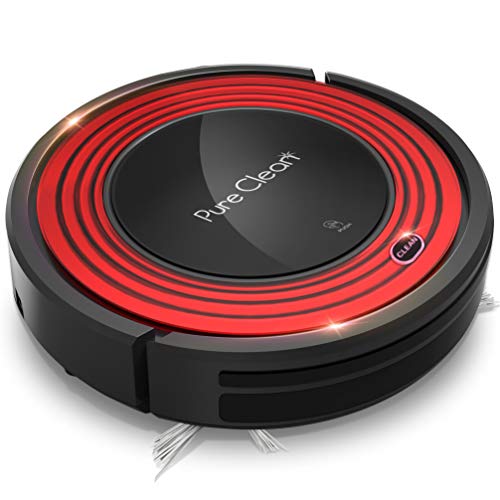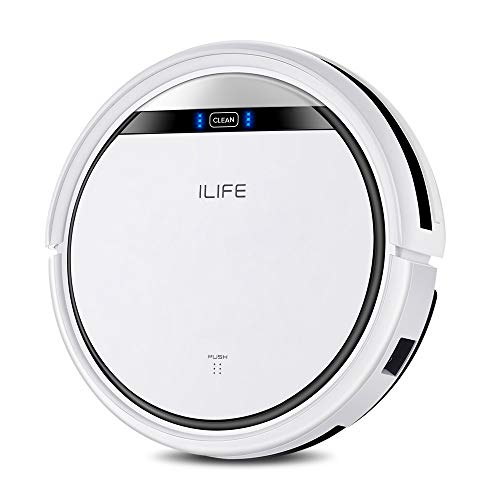 Robot Vacuum and Mop – Hands-Free Cleaning Made Easy
Robot Vacuum and Mop – Hands-Free Cleaning Made Easy
Consider this 2-in-1 cleaner if you want a cleaner that does all. It can clean medium and low-pile carpets on floors, and its app lets you create no-mop areas, and change cleaning modes and schedules.
 Find models that sense what type of flooring they’re on. empty their own water and dirt tanks and stay clear of obstacles such as phone chargers, socks and pet hair. Also, learn how easy it is to install.
Find models that sense what type of flooring they’re on. empty their own water and dirt tanks and stay clear of obstacles such as phone chargers, socks and pet hair. Also, learn how easy it is to install.
Self-Emptying
As the world becomes busier and more hectic, people are always trying to find ways to cut down their work load. Robot vacuums and mops are among the best robot vacuum and mop with mapping tools on the market to aid in that. They can remove dirt, crumbs and pet hair while simultaneously scrubbing and wiping floors clean. You can make use of your smartphone or voice assistants to control these machines using pre-programmed routines and specific room designations.
Self-emptying models are a fantastic time-saver for both the user and the. You don’t need to empty the dustbin every time you clean. This will save you a lot of time and allows your robot to keep your home clean more frequently, without having to worry about running out of space in the bin before it’s time for refills.
If you’re considering self-emptying ensure that the external dustbin is large enough to accommodate your home’s size and frequency of cleaning, because it will fill up quickly if you opt to run it on a regular basis. Also, you’ll want to ensure that the system does not overfill, causing a clog that will prevent the robot from emptying it fully.
The self-emptying feature requires removing the dustbin from the machine, and then putting it in a bigger storage container. Imagine it as a bag on a vacuum cleaner. It can be emptied every two or three cycles. These robots are worth the extra expense because they have this premium feature.
Some models wash and dry the dirty pads automatically after each use. Some models have docks that does the work for you, and you only have empty it once or twice per year.
If you’re looking for a robot that can do both take a look at the top-rated Roborock model. The RockDock-S7 MaxV Ultra can vacuum and mop, with a special dock that does all the maintenance for you. You can schedule the unit and start it using voice assistants such as Alexa or Google Assistant. You do not have to empty the tanks manually. It even has boundaries to ensure it stays out of certain areas, if you don’t want it to wander all over your home.
Object Avoidance
The best robot vacuums feature objects avoidance, which can help the device maneuver through furniture legs and children’s toys. This is a must-have for families with children and pets, because if the robot bumps into these items they’ll likely cause damage or even break the device.
The technology is usually built around a single pair of sensors that are located close to the shock-absorbing bumpers of the vacuum. When sensors detect a roadblock the robot will pivot and reorient itself until it finds an open path. Certain models employ a technology called lidar, which uses lasers to determine the distance between the robot and surrounding objects. This allows the device to create a real-time map of its environment and allows it to move around your home with greater efficiency.
Other robovacs which don’t employ lidar technology are designed to use binocular or monocular vision in order to recognize obstacles using cameras. These systems are most efficient in bright lighting, but they do not perform better in low light or with objects that have the same hue as the surroundings. A robot that has monocular vision will have difficulty recognizing cables and shoes.
Some robot vacuums are more sophisticated than others, and can do much more than avoid obstacles. This is why they are called smart vacuums. They can build an imaginary map of your home’s layout, and allow you to send them to specific areas or rooms using the app. They can even keep track of the areas they’ve previously cleaned. This will cut down on cleaning time and ensure that your home is thoroughly cleaned.
The most modern robotic vacuums and mops can switch between different types of flooring. Some robot vacuums and mops automatically detect the flooring type in a particular room and adjust suction and the brush functions to match. Some even allow switching from carpet to hard flooring without affecting suction power.
Whatever the flooring any smart vacuums and mops must be equipped with some form of obstacle avoidance. These devices ensure that appliances aren’t caught in the wires which can cause them to lose suction. Some models have a checklist of items they know about for example, socks, shoes, and pet waste. The most effective models can recognize these items, calculate their size and distance and avoid them without crashing into them.
Floor Mapping
The majority of robot vacuums are fitted with sensors that detect objects. If an object — like furniture legs or a randomly tossed toy — gets in the way it triggers a sensor which tells the vacuum turn away from the obstacle and towards a cleaner area of the floor. However they aren’t completely reliable. For example the Roomba 900 Series was able to stay clear of our shoelaces and wired headphones, but it accidentally sucked up an USB cord. We recommend moving objects away from the robot’s path before letting it run through your home.
Many of the mopping and vacuum robots we have tested in The Spruce include an app. You can use it to save maps, make schedules, select cleaning options and track your robot’s performance. The best apps are easy to set up and easy to use, and some even offer a variety of features that help your robot be more efficient.
App integration also lets you keep track of your robot’s water tank and dirty pads. It is recommended to look for models that let you determine the level of the water tank as well as the amount of wetness on the best robot vacuum for hard floors Robot mop (www.Stes.tyc.edu.tw) pad, and when the pad’s cloth should be changed. You can also create a schedule that automatically swaps out the pad when it’s wet in order to avoid mildewy smells from getting into the old pad.
The mapping feature is crucial for robot vacuums that work across multiple floors. It allows the robots to create maps of your house that they can use to navigate and clean various areas. Some robots employ sensors in combination with artificial intelligence to create these maps. For instance, iRobot’s Vacuuming Mapping feature uses multiple sensors to scan a room including corners and walls, to determine how far it can travel before it hits obstacles or hitting furniture.
Other robots, including the Ecovacs DeebotX1-OMNI or the Roborock S7 MaxV Ultra, use optical sensors to determine where the walls are. They then follow the edges of furniture or employ an algorithm to map the best cleaning robot with mop path for each room.
Mopping Settings
Robot vacuums are automated, and you only need to push a button within the app or on the remote control to trigger them to clean a space. You can also make use of voice commands to create schedules which is a useful feature for busy families that want their robot cleaner to perform its duties at the same time every day.
Most robot mops have microfibre pads that are soaked by water tanks at their base, and many can be used multiple times before having to clean or replace the pad. Look for models that can adjust the amount of water dispersed to fit different flooring types. You should also think about the dimensions of the tank, whether you can switch between dry and wet mopping, and how long a robot mop will last on one charge.
The best robot mop only robot mops are able to quickly and efficiently clean hard floors, squeezing under tables and around obstacles that are difficult for doing manually. Although they’re not perfect, they may have trouble climbing the stairs or navigating ledges that connect rooms. They can leave streaks on timber or tiles especially in bright sunlight.
A robot vacuum and mop of good quality should also have carpet sensors. This is essential when you live in a home with a mix of floor types and the robot will not be sucked into or over carpets. It should be able identify other objects that could hinder the cleaning process, such as cords and tassels. This will allow you to designate “no-go zones” that will prevent the robot from entering these areas.
The majority of robots that we test in our CHOICE lab are equipped with smart app integration. This lets you save maps of your house and create cleaning schedules, and select cleaning modes. You can also set up virtual barriers to keep your robot out of certain areas and receive (sometimes humorous) error alerts when the device is having issues. Certain apps are more user-friendly than others, and some have a webcam that allows live monitoring of your robot.
